By Rich Heidorn Jr.
WASHINGTON — In the 11 months since the Environmental Protection Agency proposed its Clean Power Plan, the idea that the final rule should include a reliability “safety valve” has become an article of faith among utility, state and RTO officials.
Count former state regulator Sue Tierney among the nonbelievers.
“I don’t think a reliability safety valve is needed because … we have those mechanisms in place today,” Tierney told a Bipartisan Policy Center forum Friday. “We have reliability-must-run contracts. We have ways to address voltage support. We have ways to address inertia. … We will not allow a plant to retire if it’s needed for reliability purposes.”
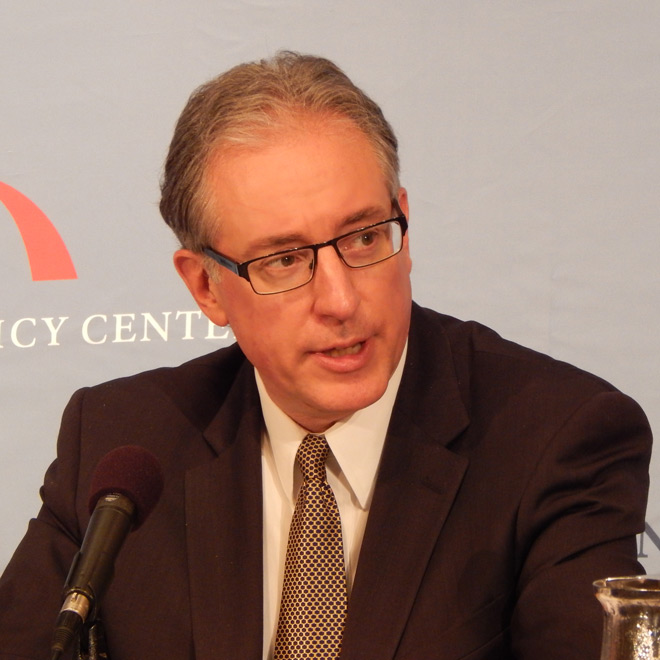
John Moore, NRDC
Tierney, senior advisor for the Analysis Group, and John Moore, senior attorney for the Natural Resources Defense Council’s Sustainable FERC Project, were in the minority in cautioning against a mechanism for providing relief from the EPA’s carbon emission rule.
Indicating their support at the forum were Gerry Cauley, CEO of the North American Electric Reliability Corp.; PPL CEO William Spence; Michael Dowd, director of the Virginia Department of Environmental Quality’s air division; James W. Gardner, vice chairman of the Kentucky Public Service Commission; Craig Glazer, PJM’s vice president for federal government policy; and John Novak, the National Rural Electric Cooperative Association’s executive director for environmental issues.
Federal Energy Regulatory Commissioner Colette Honorable mostly listened and asked questions.
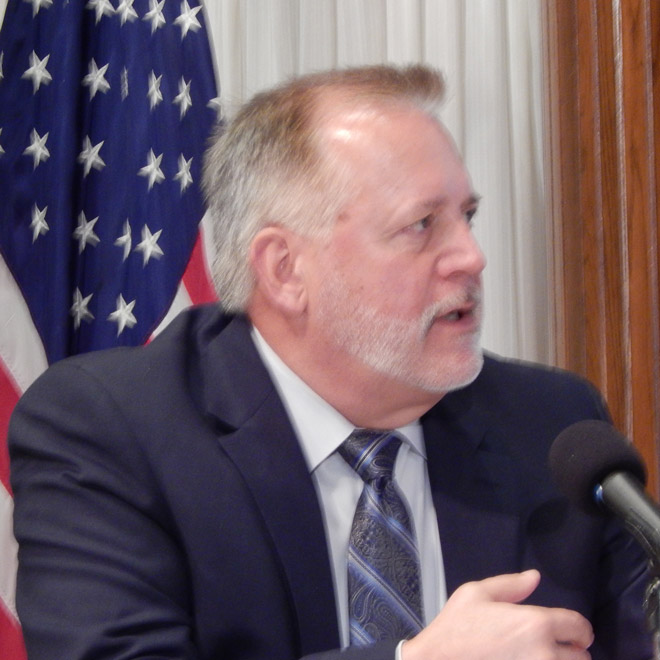
Jason Grumet, BPC
BPC President Jason Grumet said the forum was intended as “a constructive, messy, complicated conversation.” He opened the four-hour discussion by declaring what was out of bounds: “We are not going to debate the interim [EPA] targets. We are not going to be debating the legality of the rule. We’re not going to be debating the existential question of whether climate change exists,” he said.
Tierney began her comments by remarking that preparations for EPA’s Mercury and Air Toxics Standards also prompted apocalyptic warnings. Yet when the rule took effect April 16 — albeit, with a reliability safety valve included — the lights did not go out, she said.
“Business as usual is not assuming that the problems are going to go away,” she said. “Business as usual in this industry is making sure reliability is addressed all the time.”
Fear of Complacency
Tierney and Moore spent much of their time debating NERC’s Cauley and PJM’s Glazer.

Gerry Cauley, NERC
“One thing I’d like to challenge is assertions that because the grid and the utility industry [have] been resilient in the past and resolved all problems … [they] will continue to do so,” Cauley said. “We don’t work that way. If a power company operates on that presumption we go get ‘em and fine them a million dollars a day. Because you can’t go off into unknown areas and not have a well-planned, well-operated system.”
Glazer spoke on behalf of the ISO/RTO Council, which included a detailed reliability safety valve proposal in its comments to EPA. “If we do this right, Sue is right, we shouldn’t need the reliability safety valve. But boy it is a good thing in our view to have.”
Spence, representing the investor-owned utilities of the Edison Electric Institute, agreed. “We’re not asking for a free pass,” he said. “We’re just saying if we get ourselves into a situation where we need to do something, [EPA can provide relief from compliance]. I think that’s a reasonable ask.”
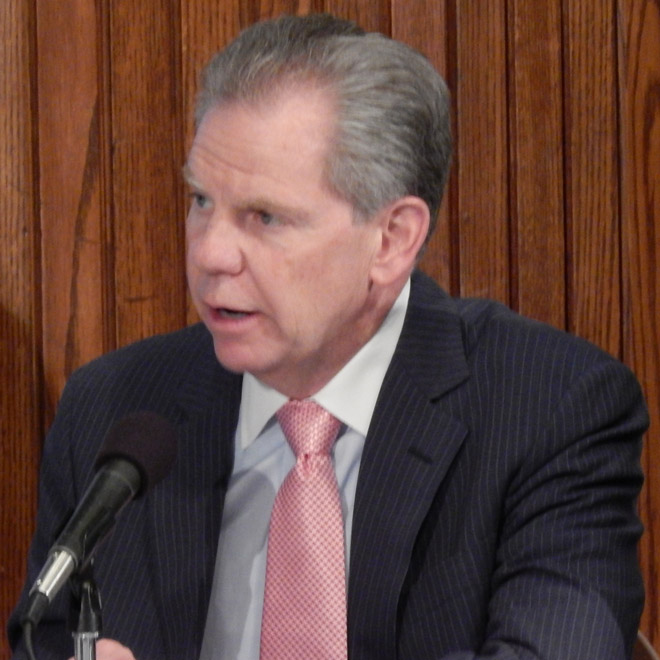
William Spence, PPL
“There will be nothing that will derail the Clean Power Plan quicker than having a reliability event,” he added. “So I would suggest [to] people who really want to see [EPA’s 30% emissions reduction] pushed across the finish line: We ought to have all the tools that we possibly can have.”
Novak said the mechanism could be needed if Virginia lost the North Anna nuclear plant. “What if for some reason [North] Anna goes down for several years — or like San Onofre in California, it goes down forever?” he asked. “Are there going to be sufficient offsets to make up for 1,000 MW or more of non-emitting generation? How long will it take to get that extra … energy?”
Dowd said he was concerned about relying on existing law and mechanisms to ensure reliability.
“The question of whether reliability trumps environment has not been established,” he said. “… The courts have not decided that.”
Undermining Markets
Tierney said the flexibility of the proposed rule — which would allow states to engage in interstate emissions trading and to lower emissions through energy efficiency, renewables and low-carbon fuels — provides ways to balance reliability and compliance.
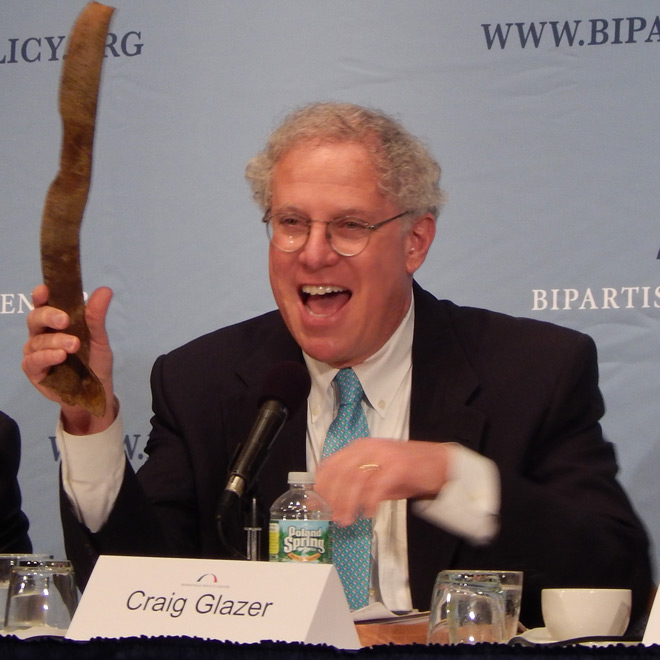
Susan Tierney, The Analysis Group
Tierney said the IRC’s proposal could result in an “administrative nightmare” and undermine the discipline needed to develop market-based compliance programs.
“Just about every [concern] that I’m hearing about could be solved with market-based approaches,” she said. “The biggest thing that will be an impediment to the development of carbon markets would be a safety valve that creates the ability to leak carbon into the atmosphere.”
Glazer responded by quoting former Defense Secretary Donald Rumsfeld’s quote: “You go to war with the army you have, not the army you wish you had.”
“The reality is we are not going into this with a mandatory, nationwide [carbon] market,” he said. “This is not Waxman-Markey,” the cap-and-trade bill that failed to win Senate passage in 2010.
Cauley acknowledged that electricity markets are resilient. “But they’re not infallible, because they are limited by gas supply [and] by resources that do get retired.
“Do I want to bet the future of grid reliability five years from now, 10 years from now on a robust carbon market? I don’t think we’ve seen that yet and I don’t know that there’s any assurance that that will materialize,” he said.
No ‘License to Steal’

Glazer said the IRC’s proposal was designed with a high burden of proof and only time-limited relief to ensure it didn’t become a “license to steal.” It would require independent verification that there is a reliability problem that can’t be addressed through carbon offsets.
“If somebody can just run into the governor’s office and get a five-year, 10-year extension, this is going to be a farce,” he acknowledged.
Moore said any increased emissions resulting from such relief should be offset by reductions elsewhere.
Glazer asked FERC not to use its litigation process in any role it would have under a reliability safety valve. (See FERC Seeking Its Role on Carbon Rule ‘Safety Valve’.)
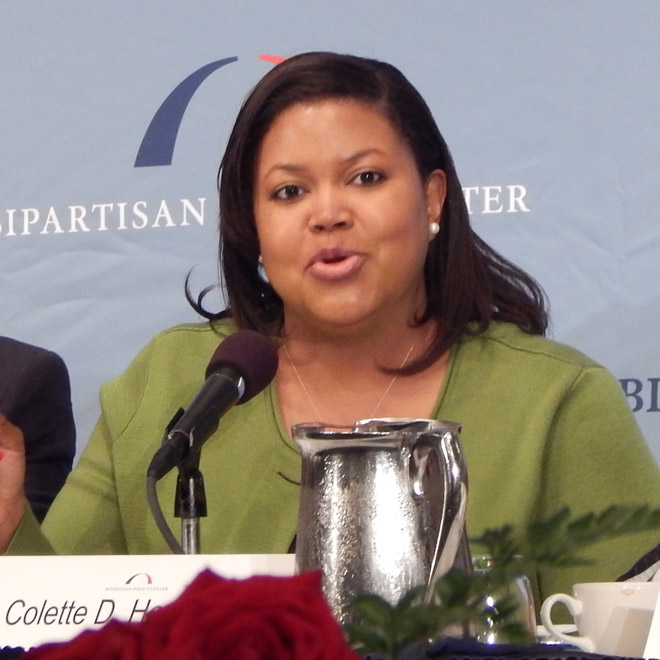
Commissioner Colette Honorable, FERC
He recalled the fight over GenOn Energy Management’s coal-fired Potomac River Generating Station outside D.C., which shut down in September 2012 under pressure from environmentalists and public officials.
“Because of the ex parte rules … I couldn’t call Joe McClellan, who was [FERC’s] reliability coordinator. We couldn’t have him at meetings. FERC became irrelevant to the process,” Glazer said. “So I implore you to find creative” alternatives.
Sitting to Glazer’s left, Commissioner Honorable nodded. “Noted,” she said.


